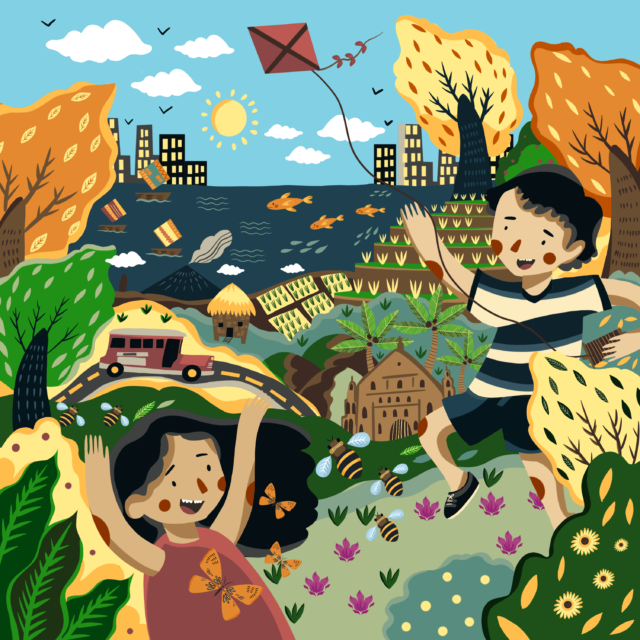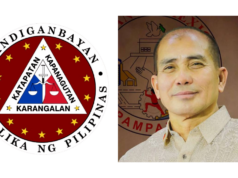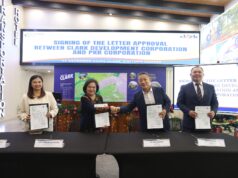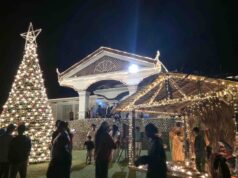The Nayong Pilipino Foundation (NPF), in partnership with Philippine Parks and Biodiversity (PPB) organized a multi-sectoral consultation called Umpukan sa Nayon last October 10, 2020 via Zoom. Titled Makakalikasang Nayon: Towards a Citizen-led Bio-diversity Conservation,” the goal of the consultation was to engage local and international experts and the general public in a discussion that will aid NPF in promoting and amplifying citizen-led biodiversity conservation in the future Nayong Pilipino Cultural Park and Creative Hub located in New Seaside Road, Entertainment City in Parañaque.
Last October 2019, the National Government approved the development of the Nayong Pilipino Cultural Park with the intention of turning it into a place of learning but also as a means to promote sustainable tourism.
The discussion was anchored to the three main questions of: What is the importance of urban parks? What policies are needed to ensure that the public can have more urban parks? How should the NPF property be transformed as a space for citizen-led biodiversity conservation?
With the help of PPB, NPF invited resource people from varying sectors in order to create a well-rounded discussion from different perspectives. NPF Executive Director Atty. Lucille Karen Malilong-Isberto explained that NPF tries to be inclusive and participatory in the design of programs and projects. The Umpukan ran from 10:00 AM to 6:00 PM, divided into three episodes with one hour intervals each.
The morning session, was titled “Episode 1: Citizen-led Biodiversity Conservation and the State” Moderated by PPB trustee Carlo Delantar, the Umpukan discussed how the future NPF park can be made into a learning space that promotes biodiversity conservation through the point-of-view of the members of the state.
Julienne Baldonado, instructor for NPF’s Cultural Leadership Institute, put emphasis on collaboration. This was echoed by Carlito Castañeda from DENR (Department of Environment and Natural Resources) who suggested not only working with the local government but also collaborating with the academe.
Dr. Benjamin Vallejo Jr. from the University of the Philippines Institute of Environmental Science and Meteorology highlighted the park’s design, mentioning that having open areas, wetlands and replicated forests increases biodiversity.
DENR Protected Area Superintendent Rey Aguinaldo added to the discourse on the park design as he went on to recount his experience in handling the Las Piñas-Parañaque Critical Habitat and Ecotourism Area (LPPCHEA). “[We started by] doing clean ups and as we did clean ups we also began planting indigenous species to enhance the vegetative cover of the area.” He further explained how they slowly removed the invasive tree species within the area until they were able to enrich its vegetative cover. As it is a park, Aguinaldo also suggested that planting specific trees that attract birds is also a must.
The afternoon session, moderated by Mark Joseph Laceste (PPB Youth Champions Lead) and titled “Episode 2: The Role of Civil Society Organizations in Biodiversity Conservation,” shed light on some concrete steps that NPF can take to ensure that the property in Parañaque will be transformed as a space for biodiversity conservation. Representatives from Non-Government Organizations (NGOs) each took turns in sharing their thoughts on this.
“I don’t even think people are aware that we need greenspaces,” said Mike Lu from the Wild Bird Club of the Philippines. He noted that the level of awareness needed to understand what to do with greenspaces and urban parks is “not there yet in the Philippines.” Last September 20, prior to this Umpukan, Lu and his team visited the NPF property in Parañaque to observe and document the bird species in the area. They found a total of 25 types of birds, six of these are migrant ones while the rest are resident urban or grassland species. He worried that further disturbance of the area would drive them away. “The wild grassland habitat must be maintained otherwise most of these species will be gone,” he explained. Lu went on to say that he hopes that the Nayong Pilipino Cultural Park will become a model project for LGUs.
From this, Grassroots Travel founder Boboi Costas mentioned the importance of education and information dissemination through the use of social media. Acknowledging how face-to-face interactions are so difficult these days, Costas encouraged the use of available tools such as the internet and social media in orienting communities about this planned project and raising awareness about the causes it supports.
Robby Cereno from the Training Center for Tropical Resources and Ecosystems Sustainability (TREES) shared his “Five As Framework of Parks Development”—the five As being Attractions, Amenities, Activities, Accommodation, and Access. These five As will help promote the future park not just for leisure and recreation but as a place that can both be a showcase and learning hub for the conservation of terrestrial ecosystems and their associated biodiversity. He cited that the Philippines has so many types of terrestrial ecosystems that can be sampled within the park.
“Philippine endemic and endangered species of plants, trees, shrubs, herbs, including epiphytes and parasites can be collected and planted in an organized and systematic manner, for presentation to the public while also serving as ex-situ (the conservation of species outside its natural habitat),” Cereno explained.
He also agreed with Costas’ insight on the use of social media and added that webinars and online forums should be complemented by multimedia campaigns—radio, TV, broadcast, and print media. Cereno also suggested raising public interest and support by setting up activities when possible. He enumerated school visits and weekly sports activities among other things.
He encouraged NPF to continue fostering connections with other organizations as these types of collaborations will result in activities that will make visits to the park “comfortable, safe, enjoyable, and educational.”
For the third and final session of this Umpukan, international resource people from Australia, England, and Germany were invited to speak. Titled “Episode 3: Insights from International Cases in Citizen-led Biodiversity Conservation,” and facilitated by PPB Co-founder Marinella Lomotan, the speakers from different overseas organizations enthusiastically shared their insights on how NPF can jumpstart building and planning its future park.
Dr. Mary Worral from the Wirral Metropolitan Borough Council mentioned seven key benefits of parks—ecology, culture, climate, economy, social benefits, health, and well-being. These are the ideas that Dr. Worral wants to communicate to the public to ensure that different types of individuals understand the relevance of parks.
Ignace Schops, president of Eurparc Federation introduced his LATTE principle saying that, “if you want to be successful in the future you need to be ‘LATTE-proof.’” LATTE being an acronym for local, authentic, traceable, trustworthy, and ethical. He explained how he sees this as what exactly needs to be taken into account when planning the future park based on nature’s design. In order to better “green Manila” Schops suggested to start with something small. “If you have small dots—small places—where you can start planting trees, [then] start with that.” He continued by saying that showing the transformation of a small commercial area into something green will slowly “connect dots” with the creation of green infrastructures throughout the entire city.
This was supported by Neil McCarthy, CEO of the World Urban Parks Association, by mentioning the creation of pocket parks though he also talked about an idea more far reaching by contacting and partnering up with schools. McCarthy suggested that a good project that will also foster public connections is to ask schools to create miniature versions of the park’s concept while still planting the trees that are expected to grow within the future site.
The Umpukan ended with NPF Deputy Executive Director Dr. LayaBoquiren thanking the attendees for an insightful discussion, ensuring that the foundation will use these insights in creating and improving on its plans and programs for the future park. She emphasized:
“This Umpukan sa Nayon or Community Gathering was organized so we can ask the public: do you want parks? Parks are not just for healing, leisure, and wellness but will serve as a biodiverse hub, a platform for citizen-led conservation. We believe inter-agency collaborations, partnerships with civil society organizations, and youth involvement will be crucial here. We need more allies. As we utilize research data and available international standards and sustainable models, we want to enable communities to have a voice and greater citizen engagement. Let this be only the beginning of our clamor for parks for the public and future generations of Filipinos. We need more allies. Together, let us dream for urban parks and realize these dreams. Let us claim Nayong Pilipino park as our legacy to future generations.”
Umpukan sa Nayon is a multi-sectoral consultation session held by NPF as part of its mandate (P.D. 37, 1972) to engage the public for consultation and to enliven conversations.





